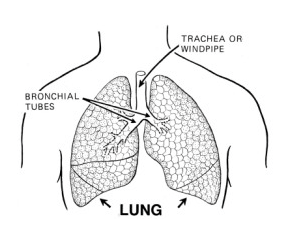
Do you think you're fit and healthy? Let's test your lung volume to find out. Just how much aircan your lungs can hold? With the help of a few simple household objects, some scientific know how and a dash of curiosity you can make this experiment look easy.
여러분은 몸이활력있고 건강하시다고 생각하나요? 여러분의 폐활량을 측정해봄으로써, 여러분의 건강상태를 확인해 보아요! 아니면 단지 여러분의 폐가 얼마만큼의 공기를 들여마실 수 있는지만이라도 알아볼까요? 몇가지 단순한 가정용품과 과학적인 노하우 그리고 약간의 호기심이 이 실험을 보다 쉽게 보이게 할 수 있어요.
■ Material (실험재료)
• Clean plastic tubing (깨끗한 플라스틱 튜브)
• A large plastic bottle (큰 플라스틱 병)
• Water (물)
• Kitchen sink or large water basin (부엌 싱크대 또는 물을 담을 수 있는 큰 세수대야)
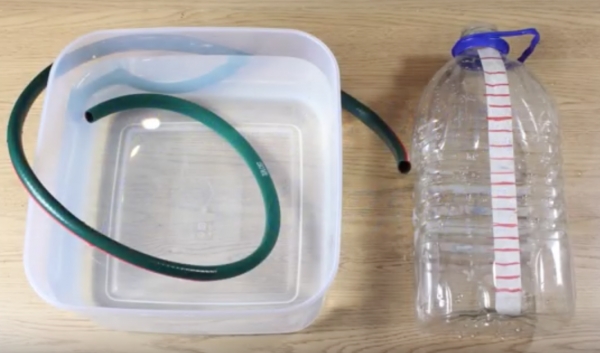
■ Procedure (실험방법/절차)
1. Make sure the plastic tubing is clean(플라스틱 튜브가 깨끗한지 확인하세요.)
2. Put about 10cm of water into your kitchen sink. (약 10 cm깊이로 부엌의 싱크대에 물을 담으세요.)
3. Fill the plastic bottle right to the top with water. (플라스틱병안에 물을 가득채우세요.)
4. Put your hand over the top of the bottle to stop water escaping when you turn it upside down. (손을 플라스틱 병 입구쪽에 대어서 플라스틱병을 거꾸로 했을때 물이 새지 않도록 해주세요.)
5. Turn the bottle upside down. Place the top of the bottle under the water in the sink before removing your hand. (플라스틱 병을 거꾸로 해주세요. 병입구에서 손을 떼기전에, 플라스틱병을 싱크대 물속에 넣어주세요.)
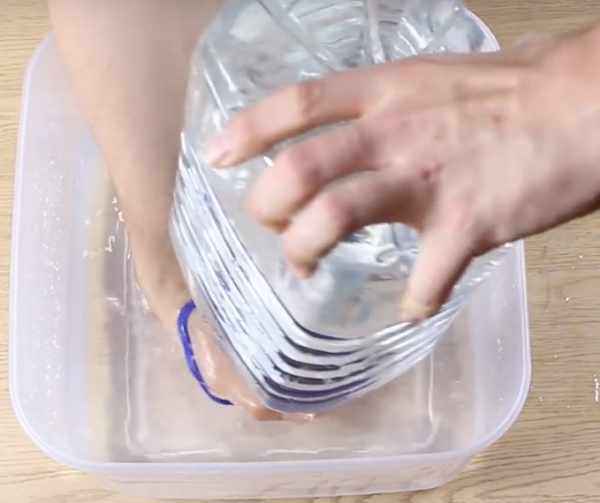
6. Push one end of the plastic tube into the bottle. (플라스틱튜브의 한쪽 끝을 플라스틱 병에 넣어주세요.)
7. Take a big breath in. (숨을 크게 들여쉬세요.)
8. Breathe out as much air as you can through the tube. (그리고 플라스틱 튜브안으로 힘이 닿는대까지 크게 숨을 불어주세요.)
9. Measure the volume of air your lungs had in them. (여러분의 폐에 가지고 있었던 공기의 양을 재보세요.)
10. Make sure you clean up the area to finish. (실험한 곳을 깨끗하게 청소하세요.)
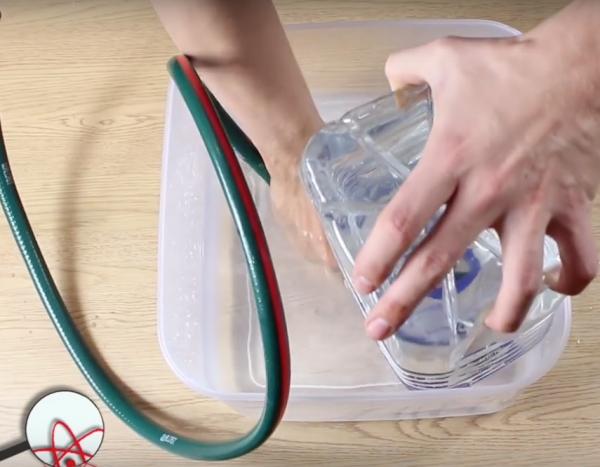
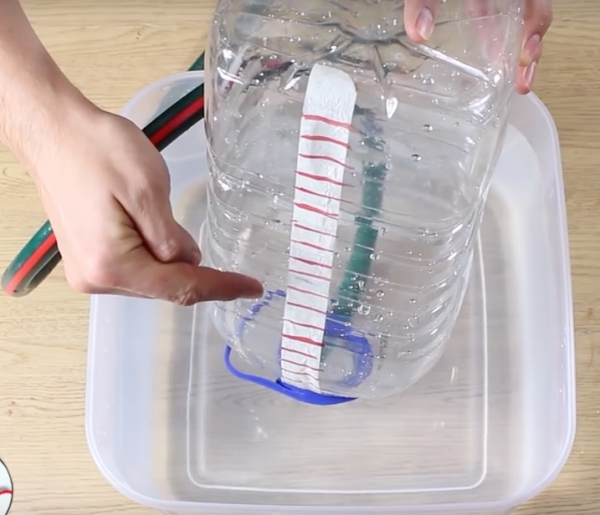
■ Scientific Explanation (과학적설명)
As you breathe out through the tube, the air from your lungs takes the place of the water in the bottle. If you made sure you took a big breath in and breathed out fully then the resulting volume of water you pushed out is equivalent to how much air your lungs can hold. Having a big air capacity in your lungs means you can distribute oxygen around your body at a faster rate. The air capacity of lungs (or VO2 max) increases naturally as children grow up but can also be increased with regular exercise.
튜브로 공기를 불어내게 되면 여러분의 폐에 있었던 공기가 플라스틱병에 있었던 물을 대신하게되요. 여러분이 공기를 크게 들어쉬고, 크게 내뱉게되면 여러분이 플라스틱 병안에서 밀어낸 물의 양이 여러분이 내뱉은 공기의 양, 즉 여러분의 폐가 가지고 있을 수 있었던 공기의 양과 같게되는 것이예요. 폐에 공기를 많이 담을 수 있다는 것은 여러분이 몸안에 산소를 빨리 공급할 수 있다는 뜻이예요. 폐활량 (다시말하면 VO2 max)는 아이들이 자라면서 증가하게되고, 규칙적인 운동으로도 증가되게 되어 있어요.

■ Key Vocabulary
• Lung volume :폐활량
• A dash of : 약간의, 소량의
• Basin : 세수대야, 물받는그릇
• Upside down : 거꾸로하다
• Escape : 탈출하다, 빠져나가다
• Remove: 제거하다, 없애다
• Breathe out / breathe in : 숨을내쉬다, 숨을들이쉬다
• Take place : ~을대신하다
• Equivalent : ~과같다
• Capacity : 수용량
■ To watch the experiment video, please go to : 과학실험비디오
http://blog.naver.com/handsonenglish(사진출처: all-science-fair-projects)
<김광미(Kwangmi Kim Shin)/TCIS(대전국제학교) ELL Coordinator/미국 존스홉킨스 교육대학원 석사/미국 매릴랜드주 몽고메리카운티 공립학교 ESOL교사>


